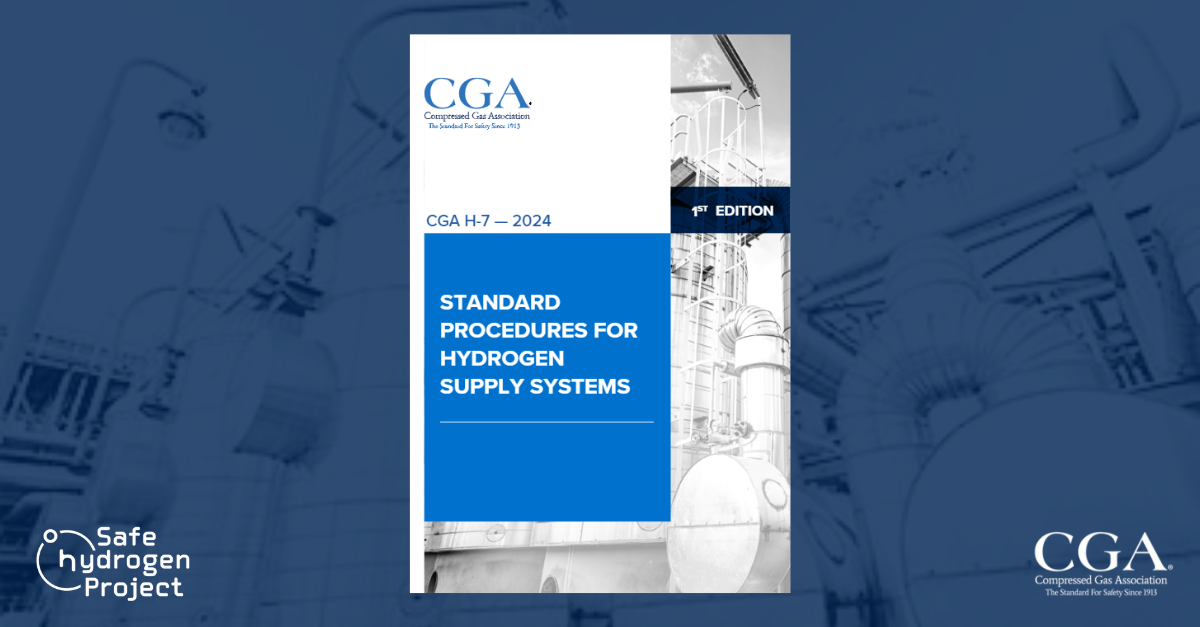CGA Releases New Standard Procedures for Hydrogen Supply Systems Amid Growing Safety Concerns
The Compressed Gas Association (CGA) is taking a significant step forward in enhancing hydrogen safety with the publication of its latest document, H-7, Standard Procedures for Hydrogen Supply Systems. This initiative comes at a critical time as the shift towards renewable and clean energy accelerates the expansion of hydrogen-related activities, notably in consumer-facing sectors like hydrogen fuel cell electric vehicle refueling stations.
Historically confined to industrial applications, hydrogen’s broader adoption introduces new participants to its use, many of whom may possess limited knowledge of hydrogen safety. Public apprehension regarding hydrogen safety underscores the need for widespread adoption of best practices in hydrogen handling and operations. CGA’s H-7 aims to address these concerns by providing comprehensive guidelines based on the collective wisdom of experts with decades of experience in the field.
H-7 covers a wide array of procedures for managing both bulk gaseous and liquefied hydrogen supply systems throughout their entire lifecycle, including commissioning, start-up, routine operation, maintenance, and decommissioning. This publication is designed to complement, not replace, existing CGA hydrogen standards, offering users a foundational understanding of the operational environment of hydrogen systems and directing them to further resources for in-depth information on specific topics.
The document emphasizes general safety principles applicable to all aspects of hydrogen system management, such as understanding hydrogen properties, safe venting practices, equipment grounding, personal protective equipment (PPE) usage, equipment and piping purging, and safety planning. Each section not only outlines procedural and principle-based guidance but also refers to additional CGA standards and resources for detailed information, enhancing the users’ ability to implement best practices effectively.
In addition to safety principles, H-7 details best practices for different stages in the hydrogen system lifecycle, addressing key operational questions and providing insights into specific processes such as lock out/tag out, hot work, leak checking, and marking and labeling. This holistic approach ensures that users, particularly those new to the hydrogen space, are well-equipped to navigate the complexities of hydrogen supply system management safely and effectively.
CGA encourages all stakeholders, especially newcomers to the hydrogen industry, to familiarize themselves with H-7 as well as the broader suite of CGA hydrogen standards. This initiative is a critical component of CGA’s commitment to advancing hydrogen safety and facilitating the responsible growth of the hydrogen sector.
For more information on H-7 and to access the document, visit CGA’s publication portal. Queries can be directed to CGA Technical Manager Rob Early at rearly@cganet.com, who is available to assist with any questions regarding hydrogen safety and best practices.
Safe Hydrogen Project
The Safe Hydrogen Project is CGA’s collaborative global effort to develop and distribute safety information for the production, storage, transport, and use of hydrogen. Learn more at: SafeHydrogenProject.org


